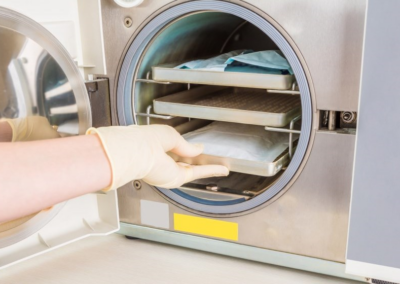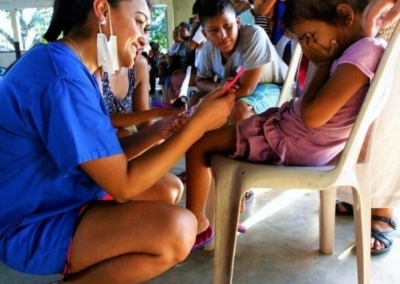As dental students, taking the step to work in clinics across Latin America offers a unique and rewarding challenge. It’s a chance to apply your skills in diverse environments, from bustling urban centers to remote rural areas. In these settings, being prepared for dental emergencies becomes crucial. The scope of dental health in Latin America presents distinct scenarios that often differ from what you may be accustomed to from other parts of the world. You will encounter various dental issues, some familiar and others specifically unique to the region. This experience is about providing care and learning and adapting to different healthcare systems and cultural perspectives. As you set out on this journey, remember it’s an opportunity to make a significant impact while honing your dental expertise in real-world situations. Embracing this adventure will enrich your understanding of global dental health and enhance your skills as a future dental professional.
Current State of Dental Emergency Preparedness in Latin America

In Latin America, the availability and quality of dental emergency services vary widely. In larger cities, you’re more likely to find clinics equipped with modern facilities and experienced dentists. These urban centers often have dental services that are comparable to those in the United States or Europe, with the latest technology and treatments available.
However, in rural areas, the scenario is quite different. Access to dental care can be limited, with fewer clinics and dentists available. Dental professionals may face challenges in these regions due to a lack of resources and up-to-date equipment. This means that for serious dental emergencies, individuals might have to travel to larger cities for treatment, which can be both time-consuming and costly.
The quality of care also varies. In some places, you’ll find highly skilled dentists providing excellent care. But in others, especially remote areas, the quality can be unpredictable. This inconsistency is often due to different levels of training and resources available to dental professionals.
For dental students traveling to work in these areas, it’s important to be adaptable and resourceful. You might be working in well-equipped clinics one day and facing resource constraints the next. Understanding and adapting to these varying conditions is crucial to working in dental emergency services in Latin America.
Dental Care Challenges in Rural Areas

Providing dental emergency care in rural areas of Latin America comes with its own set of challenges. One major issue is the limited availability of dental clinics and professionals. In these remote regions, you might find that only a few dentists are serving large communities, making it hard for everyone to get the care they need quickly.
Transportation can be another big hurdle. In many rural areas, getting to a dental clinic can be difficult due to long distances and sometimes unreliable transport options. This means that someone with a dental emergency might have to travel for hours to reach a dentist.
Equipment and supplies can also be scarce in these areas. Rural dental clinics may not have the latest technology or enough materials, which can limit the types of treatments they can offer. Dental students working in these areas need to be prepared for this. You might need to use more basic techniques and tools than you’re used to.
Despite these challenges, working in rural Latin America can be incredibly rewarding. You get the chance to make a real difference in communities that need dental care the most. Plus, it’s a great opportunity to develop your skills in a unique setting.
Healthcare System Hurdles in Latin America

The healthcare systems in Latin America face several challenges that can impact dental emergency preparedness. One of the main issues is the difference in healthcare resources between urban and rural areas. In big cities, you’re likely to find well-equipped hospitals and clinics with various services. But in rural areas, resources are often limited, affecting the availability of comprehensive dental care.
Funding is another challenge. Many Latin American countries have limited budgets for healthcare. This means there’s often not enough money to have the latest equipment or enough staff in clinics and hospitals, especially in less populated areas. This can lead to longer wait times and less access to specialized dental care.
Training and education of dental professionals also vary. Dentists and dental assistants receive excellent training in some parts of Latin America. However, in other areas, they might not have access to the latest knowledge and techniques, which can affect the quality of care.
These challenges mean that dental emergency preparedness in Latin America requires flexibility and resourcefulness. Understanding these hurdles helps in appreciating the efforts made by healthcare professionals in these regions and prepares you for the realities of working in diverse healthcare environments.
Boosting Public Awareness of Oral Health in Latin America
Raising public awareness about oral health is key in improving dental emergency preparedness in Latin America. Many people might not know how important it is to take care of their teeth and gums. Educating the public about basic oral hygiene, like regular brushing and flossing, can prevent a lot of dental problems.
It’s also crucial for people to understand what to do in a dental emergency. This includes knowing when to seek immediate care and being aware of the nearest dental clinic. In rural areas, where access to dental care can be limited, this knowledge becomes even more vital.
Community education programs can play a big role in this. They can provide valuable information about maintaining good oral health and what steps to take in an emergency. By increasing public awareness and education, communities can be better prepared to handle dental emergencies and improve overall oral health.
Smiles Movement and MEDLIFE’s Role in Enhancing Dental Emergency Preparedness in Latin America
Smiles Movement, a division of MEDLIFE, plays a significant role in improving dental emergency preparedness in Latin America. They focus on bringing essential dental care to underserved communities in Peru and Ecuador. Through dental mobile clinics and follow-up care, they address the dental needs in these areas. Volunteers, including students, work alongside local practitioners, providing treatments and educating communities about oral health. This initiative helps bridge the gap in dental services, especially in remote areas.
The importance of dental emergency preparedness in Latin America cannot be overstated. Organizations like the Smiles Movement and MEDLIFE are crucial in addressing the gaps in dental care. Our work not only provides immediate relief but also fosters long-term health improvements. To learn more and support this cause, you can download our brochure and join this amazing movement today! Your involvement can make a real difference in improving dental health in these communities.







